
|
![]()
Greatest Films of the 1930s
1930 | 1931 | 1932 | 1933 | 1934 | 1935 | 1936 | 1937 | 1938 | 1939
Title Screen Film Genre(s), Title, Year, (Country), Length, Director, Description 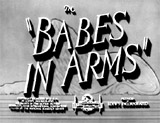

Babes in Arms (1939), 93 minutes, D: Busby Berkeley
Famed surrealist choreographer Busby Berkeley's directorial effort was the first pairing of stars Judy Garland and Mickey Rooney in a "let's put on a show musical," the third film in which they were in together, and MGM's biggest hit of the year (even greater than The Wizard of Oz (1939)!). It was also the legendary Arthur Freed’s first movie as a producer for MGM. Two talented yet struggling young artists (singers and musicians) in their town of Seaport, Long Island, Mickey Moran (Mickey Rooney) and pretty singer/girlfriend Patsy Barton (Judy Garland), both children of ex-vaudevillians, teamed up to put on a grand show. They wished to raise money for their ailing parents in hard-times who wanted to revive their entertainment careers and not lose their homes. The two were opposed by the busybody head of the welfare board Martha Steele (Margaret Hamilton), who believed the youngsters should be in a "work" school instead, and by ex-child movie star Rosalie Essex (known as Baby Rosalie) (June Preisser) who competed with them for her own comeback. She proposed to financially support Mickey's musical project, but only if she took Patsy's lead role (as performer and girlfriend!). The film featured lots of singing, dancing, and comedy impersonations (Rooney mimicked both Clark Gable and Lionel Barrymore). Included the title song "Babes in Arms," and "Good Morning," "God's Country," "Broadway Rhythm," "I Cried For You," "The Lady is a Tramp," and "You Are My Lucky Star."


Beau Geste (1939), 114 minutes, D: William A. Wellman
A stirring adventure tale, and the best of three oft-made screen versions (also 1926 and 1966), from Paramount. The brothers Geste, including Michael "Beau" Geste (Gary Cooper), John (Ray Milland), and Digby (Robert Preston) served in the Foreign Legion together, and must persevere against Arab attacks and their tyrant Sgt. Markoff (Brian Donlevy). The story, in flashback, centered around "Beau," who confessed to the theft of a fake jewel, "the Blue Water" sapphire, to save the honor of the brothers' impoverished Aunt, Lady Patricia Brandon (Heather Thatcher). He left and joined the Foreign Legion, and was later joined by his brothers, who fought long enough to save and clear the family name. The film's final line was spoken by Lady Patricia after she learned that a devoted "Beau" had acted gallantly years earlier, by sparing her humiliation over the jewel's sale: "Beau Geste? Gallant gesture. We didn't name him wrongly, did we?" The film began with the unforgettable opening sequence of the desert sand dunes and Fort Zinderneuf with dead soldiers propped up against the parapets, lending an air of mystery and drama to the story.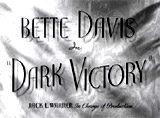


Dark Victory (1939), 105 minutes, D: Edmund Goulding
A melodramatic tearjerker with Bette Davis in one of her most powerful and memorable roles. Remade as Stolen Hours (1963) (aka Summer Flight), starring Susan Hayward. One of four films that Davis made in 1939, including The Old Maid, Juarez, and The Private Lives of Elizabeth and Essex. A high-living, flighty Long Island socialite/heiress Judith Traherne (Bette Davis) lived a carefree hedonistic life (with horse-riding), along with playboy Alec Hamin (Ronald Reagan). When her eyesight was starting to dim, she was diagnosed as having a brain tumor ("prognosis negative"). After a seemingly successful operation by her neuro-surgeon, Dr. Frederick Steele (George Brent), she fell in love with him and found happiness, only to discover that she actually had only one more year to live. First resorting to more meaningless parties, rejection of the doctor, and despair, she then found true meaning and happiness in her life. She added great substance to her final days in Vermont and died with resigned dignity (in a climactic stair-climbing scene with Max Steiner's swelling score), with the support of her best friend and loyal secretary Ann King (Geraldine Fitzgerald).




Daybreak (1939, Fr.) (aka Le Jour Se Lève), 88 minutes, D: Marcel Carné
One of the great works of 1930s poetic realist cinema, a psychological, noirish melo-drama. The film was banned by the Vichy government in France after its theatrical release, for its dark and demoralizing pessimism and political commentary. Remade by RKO as director Anatole Litvak's The Long Night (1947) with Henry Fonda. François (Jean Gabin), a hard-working French factory worker as a sandblaster, angrily gunned down and murdered sinister, cruel, manipulative, and dishonest womanizing cad M. Valentin (Jules Berry), a vaudeville nightclub dog trainer. He desperately locked himself in his furnished, one-room attic apartment (surrounded by police awaiting daybreak) at the top of a six-story building. Through a series of dissolves as he awaited dawn, he experienced three flashbacks to recall and reflect upon why he was led to murder, while chain-smoking and awaiting his fate. He had met young florist shopgirl Françoise (Jacqueline Laurent), an orphan like himself, and they fell in love. But at the same time, François was strongly attracted to Valentin's mistreated, yet attractive and sexually provocative assistant Clara (Arletty), and Françoise was under the spell of Valentin. A deadly love quadrangle of sorts developed between the characters, leading to François' jealous rage against the Machiavellian Valentin. One of Valentin's false claims was that Françoise was his long-lost daughter. In the end, the despairing François took his own life, as the police's tear gas filled his apartment.

Destry Rides Again (1939), 94 minutes, D: George Marshall
A popular and marvelous Western comedy spoof/farce from Universal Pictures - a satirical parody of the classic Western with its stereotypical elements - a lawless Western town with a saloon and a sheriff, peppered with three saloon/musical numbers! The western was set in the Last Chance Saloon in the wild Western town of Bottleneck. The town's bar-room was corrupt and out of control, run by unscrupulous saloon owner Kent (Brian Donlevy), who featured in his wild saloon the lusty, sexy dance-hall singer Frenchy (Marlene Dietrich, reprising her sexy role from The Blue Angel (1930)). The son of a famous brave lawman, laconic, peace-loving Tom Destry (James Stewart) was summoned to the town to tame it - but he was a milk-drinking, soft-spoken, mild-mannered, gunless sheriff. Despite his shortcomings, Destry was able to keep the peace, in between his attempts to resist the charms of Frenchy. Destry shot Kent, but heroine Frenchy collapsed and died in his arms, mortally wounded in the back from Kent's bullet. Before dying, she let him know that she loved him, gasping: "Would you kiss me goodbye?" Memorable for Frenchy's rendition of "See What the Boys in the Back Room Will Have" and for the roughest female catfight - a bar-room brawl - in film history (a marathon wrestling match pitting Frenchy against Mrs. Callahan (Una Merkel)).



Drums Along the Mohawk (1939), 103 minutes, D: John Ford
An action-adventure epic-historical drama set in the pre-Revolutionary War era, highlighting the harshness of survival and savage Indian attacks in the Mohawk Valley wilderness of upstate colonial New York. This was John Ford's sole film set in colonial America. Settlers Lana "Magdelana" Martin (Claudette Colbert), a young, frightened cultured bride from an Eastern city, joined her newlywed loving husband Gil Martin (Henry Fonda) to live on the frontier. The newlywed watched and assisted her husband and other neighbors, including feisty frontier matriarch Sarah McKlennar (Edna May Oliver), in the struggle against marauding Indians, and grew to learn a new way of life. In one scene, Sarah refused to leave her bed during an Indian attack. With exciting battle scenes and a last-minute fort rescue preventing an Indian massacre. In the stirring finale, Gil - after having been given permission to leave by his beautiful wife Lana: "I'm not afraid, I want you to go" - outran three Indians in hot pursuit while racing for help (with just a hand axe) to save the besieged fort. The drama ended with Gil's reunion with his exhausted but relieved wife.



The Four Feathers (1939, UK), 130 minutes, D: Zoltan Korda
A classic adventure story, in striking Technicolor, remade as Shekhar Kapur's The Four Feathers (2002) starring Heath Ledger, Wes Bentley, and Kate Hudson. In the year 1898, a young British army officer Harry Faversham (John Clements) from a family with a strong military tradition, remained at home as a dangerous British military expedition/campaign left for the Sudan. He resigned his commission, disappointing his family, friends, and sweetheart Ethne Burroughs (June Duprez). Disgracefully, he received four white feathers from three officers of his regiment: Capt. John Durrance (Ralph Richardson), Lt. Tom Willoughby (Jack Allen), and Peter Burroughs (Donald Gray), and one feather from his fiancee Ethne. The feathers were regarded as symbols of cowardice and shame. To redeem his name and prove his courage, he traveled to distant Egypt and ultimately to the Sudan, disguised himself as a mute, dark-skinned native warrior, courageously fought alone for his country, and rescued his army comrades in the Sudan. One by one, he surreptitiously returned the feathers to the presenters.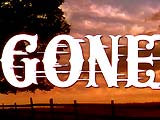





Gone With the Wind (1939), 220 minutes, D: Victor Fleming, George Cukor, and Sam Wood
From Margaret Mitchell's great 1936 novel about the Civil War, David O. Selznick's majestic production with enduring appeal and technical achievements (three-strip Technicolor), with a record 13 Academy Award nominations and the winner of eight competitive Oscars (with an Honorary Ward and special recognition for William Cameron Menzies' production design and use of color). With a terrific, lyrical musical score by one of the greatest film composers of all time, Max Steiner. With a production cost of over $4 million - it was the longest and most expensive Hollywood sound film of the time. It also remains the domestic box-office champ with a gross of $1.64 billion (adjusted for inflation). Made with many screenwriters and directors contributing. One of the greatest films ever made, a landmark epic film and Best Picture. It was a stunning, panoramic Civil War story of the transformed lives of leading families as the Southern aristocracy crumbled and the South was defeated. From the stories of the lives of a number of memorable characters including a pampered, spoiled, headstrong beautiful young Southern belle Scarlett O'Hara (Best Actress-winning Vivien Leigh) from the beloved Tara plantation, a dashing and cavalier war profiteer named Rhett Butler (Clark Gable), loyal black slave Mammy (Best Supporting Actress Oscar-winner Hattie McDaniel, the first given to an African-American), Scarlett's saintly cousin Melanie Hamilton (Olivia de Havilland), and the ineffectual character of Ashley Wilkes (Leslie Howard), the story was told through great spectacle, romance, despair, conflict and travail.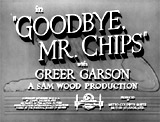


Goodbye, Mr. Chips (1939, UK), 114 minutes, D: Sam Wood
A sentimental romantic drama based upon the 1934 James Hilton novel, and remade as an MGM musical - the film debut of director Herbert Ross, Goodbye, Mr. Chips (1969) starring Peter O'Toole. The tale was a portrait of caring, well-meaning, but shy and proper Latin schoolmaster Mr. Chipping ("Chips") (Best Actor-winning Robert Donat) at an English boys school, Brookfield School, in the late 1800s who devoted his life to his students. On a vacation, he found romance with outgoing and lively Katherine Ellis (Greer Garson in her American film debut), his future wife, and she transformed his life. With her gentle and kind love and humanity, she was one of the few individuals who truly understood him, and helped him to overcome his shyness and rigidity. Although she tragically passed away during childbirth, her lessons endured and he became a dedicated teacher and popular institution at the school until his retirement and death in his eighties.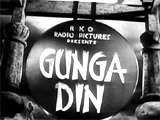



Gunga Din (1939), 117 minutes, D: George Stevens
RKO's classic, rousing action-adventure buddy film, partly based on Rudyard Kipling's poem of the same name. With a script adapted by Charles MacArthur and Ben Hecht, who based the relationships of the film's characters on their 1928 hit play The Front Page (and later as a 1931 movie). One of the uncredited, contributing storywriters was novelist William Faulkner. A film with spectacle, action, and battle scenes, and comic touches as well. In 19th century colonial India, three frontier veteran comrades-in-arms, British Sergeants in the Queen's Indian Regiment, Cutter (Cary Grant), MacChesney (Victor McLaglen) and Ballantine (Douglas Fairbanks, Jr.) and a loyal native water carrier with soldierly ambitions Gunga Din (Sam Jaffe) put down an uprising and rebellion by a savage fanatical religious cult, the Thugs, devotees of the goddess Kali.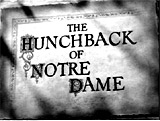



The Hunchback of Notre Dame (1939), 115 minutes, D: William Dieterle
Probably the best film adaptation of Victor Hugo's classic tale of a tragic love story set in 15th century medieval Paris. Filmed earlier as the silent film The Hunchback of Notre Dame (1923) with Lon Chaney, and later in 1956 with Anthony Quinn and Gina Lollobrigida. It was also a TV movie in 1982 with Anthony Hopkins and Lesley-Anne Down, and a Disney animation in 1996. A hideously-deformed, grotesque, outcast hunchback Quasimodo (Charles Laughton) lived as the bell-ringer in the towers of Notre Dame's Cathedral. The hunchback was scorned by an angry mob during a public whipping and pillory, but was shown pity and kindness by a beautiful Gypsy dancer girl, Esmeralda (Maureen O'Hara in her screen debut) who brought him water. He developed a tragic fondness for the girl, and rescued her from being hanged in the public square after being charged as a witch by bigoted, jealousy-crazed Chief Justice Frollo (Cedric Hardwicke). Quasimodo took her back into the bell tower and claimed 'Sanctuary.'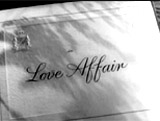




Love Affair (1939), 87 minutes, D: Leo McCarey
A romantic comedy/soap opera, remade years later (by the same director) with Cary Grant and Deborah Kerr as An Affair to Remember (1957). This was Leo McCarey's first version of the 'weepie' tale. Also remade as Love Affair (1994) starring real-life couple Warren Beatty and Annette Bening. Not to be confused with Columbia's Love Affair (1932) with Humphrey Bogart. A traveling couple, playboy artist Michael Marnet (Charles Boyer) and nightclub singer Terry McKay (Irene Dunne), each engaged to others who were wealthier, met on board a transatlantic voyage and began a shipboard romance. They vowed to rendezvous again six months later on their return to the US atop the Empire State Building, to test their love. On the way to the meeting, Terry had an automobile accident and was reluctant to reveal her paralysis. She missed their meeting, and he assumed that she had been married in the meantime, although they were reunited again by chance at film's end.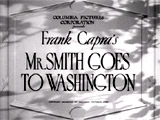


Mr. Smith Goes to Washington (1939), 129 minutes, D: Frank Capra
One of Frank Capra's time-honored, enduring classic political comedy/dramas about the triumph of the ordinary man over the corrupt political elite, restoring faith in democracy. Sidney Buchman based his script upon Lewis R. Foster's novel "The Gentleman from Montana." Idealistic, naive Boy Rangers leader Jefferson Smith (James Stewart) was drafted to the Senate in Washington by his state's governor Hubert "Happy" Hopper (Guy Kibbee), appointed as a freshman/junior Senator to complete the remaining term of dead US Senator Sam Foley. The corrupt "political machine," led by his state's senior Senator Joseph "Joe" Paine (Claude Rains) (a friend of Smith's late father), and mastermind corrupt political boss, Jim Taylor (Edward Arnold), believed Smith would easily be a controllable rubber-stamp. But when Jefferson discovered the land-scam plans of his supporters, he became stubbornly determined to not forsake his dreams and to do what's right against the corrupt, greedy forces running his state. With the support of his cynical secretary Clarissa Saunders (Jean Arthur), he delivered a powerful, rousing and passionate filibuster on the Senate floor in the final climactic moments.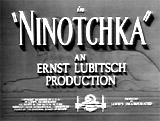


Ninotchka (1939), 110 minutes, D: Ernst Lubitsch
A very enjoyable romantic comedy directed with a light touch and sophistication by Ernst Lubitsch, most known for being advertised as the one in which "Garbo Laughs." With a great script by Billy Wilder and Charles Brackett. Remade the next year as Comrade X (1940), featuring Hedy Lamarr and Clark Gable, and later as Iron Petticoat (1956) starring Katharine Hepburn and Bob Hope. A stern, austere, icy-cold Soviet commissar Lena Yakushova "Ninotchka" (cool and beautiful Greta Garbo in her first major comedy) was sent to Paris to check up on and chastise three over-indulgent fellow comrades: Michael Iranoff (Sig Ruman), Buljanoff (Felix Bressart), and Kopalski (Alexander Granach). They were easily seduced by Western capitalism in Paris, and failed to negotiate the sale of former Russian Grand Duchess Swana's (Ina Claire) imperial jewels, in exchange for tractors. She was met by a suave, Parisian playboy Count Leon D'Algout (Melvyn Douglas), the Duchess' lover who eventually seduced and charmed the rigid, no-nonsense Russian, and she fell victim to the same traps - capitalism and romance in the City of Light.

Of Mice and Men (1939), 107 minutes, D: Lewis Milestone
An excellent film adaptation of John Steinbeck's Depression-era classic novel, a bittersweet, tragic story of two ranch hands-drifters traveling together in California's Salinas Valley. Remade faithfully as director Gary Sinise's Of Mice and Men (1992) with John Malkovich and Gary Sinise. Two migrant field workers, Lennie Small (Lon Chaney, Jr.) - a large, physically-strong but dim-witted (potentially dangerous) individual with a great passion for soft furry things ("Tell me about the rabbits, George"), and George Milton (Burgess Meredith), Lenny's guardian and protector, only fantasized that they wanted to live peacefully on their own small ranch. But Lenny's innocence, feeble-mindedness, his clumsy misuse of his physical strength, and finally a brutal set of circumstances ended their comforting dream, after they began working for harsh and crusty ranch owner Whit (Noah Beery Jr.), the ranch foreman Slim (Charles Bickford), Whit's cruel, pugnacious and bullying foreman son Curley (veteran cowboy star Bob Steele), and Curley's promiscuous bored wife Mae (Betty Field).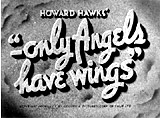

Only Angels Have Wings (1939), 121 minutes, D: Howard Hawks
A classic Howard Hawks adventure film and character study, with a great cast and sharp script-writing. [Note: Cary Grant never said, "Judy, Judy, Judy" to co-star Rita Hayworth in this film.] Cargo pilots who hazardously flew air freight and mail over the rugged and dangerous Andes Mountains for the small Barranca Airways company in South America were led by chief pilot Geoff Carter (Cary Grant). Stranded showgirl and cabaret singer Bonnie Lee (Jean Arthur) set tensions on edge with her affection for him. Trans-Andes air courier director Carter hired another pilot Bat McPherson (silent film star Richard Barthelmess in a comeback role, although it was his last), still feeling shunned and guilt-ridden by a fatal accidental crash years earlier and attempting to prove himself (he believed he was responsible for the death of Kid Dabb's brother, for jumping out of a plane and leaving his co-pilot/mechanic to die). He was accompanied by sexy wife Judy (Rita Hayworth), embittered Carter's ex-girlfriend who attempted to seduce him. One of the older pilots, Carter's close friend, the near-blind Kid Dabb (Thomas Mitchell) volunteered to co-pilot a dangerous mission in the fog-shrouded Andes and died in the final scene.

The Roaring Twenties (1939), 104 minutes, D: Raoul Walsh
A brisk, semi-documentary film adaptation from journalist Mark Hellinger's realistic story about 1920s gangsterism and Prohibition days, from the tough-guy studio of the 1930s - Warner Bros. Three WWI doughboys returned from the battlefields, Eddie Bartlett (James Cagney), Lloyd Hart (Jeffrey Lynn) and George Hally (Humphrey Bogart). Eddie, one of the returning veterans, a former taxicab-garage mechanic, couldn't find work. New York speakeasy gal (nightclub hostess) Panama Smith (Gladys George) (based upon Texas Guinan) suggested he turn to bootlegging, and he soon flourished in the business in a partnership with Hart and Hally, until rival gangs (and George Hally as a top racketeer after the crash) and the law competed against his enterprise. Wartime buddy Lloyd Hart had now become a crusading city district attorney, married to Eddie's ex-girlfriend and love Jean Sherman (Priscilla Lane), while Hally had become a ruthless and murderous crime boss. Hally found himself under attack by prosecutor Hart, while down and out Eddie returned to the taxicab business. When it failed, he attempted to spare the lives of Jean (Eddie was still in love with her) and her husband from sinister kingpin mobster Hally. With an extremely memorable final scene, in which there was a violent confrontation between the two gangsters - Hally and Eddie. Halley was shot down by Eddie, who was also lethally wounded. He died in the cold on the snowy steps of a church. Panama provided his epitaph to a policeman: "He used to be a big shot."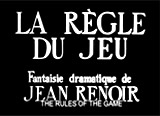


The Rules of the Game (1939, Fr.), (aka La Règle du Jeu), 110 minutes, D: Jean Renoir
A brilliant social comedy by director Jean Renoir, originally banned as too "demoralizing." It was a satirical observation of bourgeois life and the social class system as a dark upstairs-downstairs bedroom farce. Set at the start of WWII in La Colinere, the French chateau of Marquis Robert de la Cheyniest (Marcel Dalio) and his upper-class heiress wife Christine (Nora Gregor), during a lavish party. A darkly disturbing "Dance Macabre," unusual after-dinner entertainment, was performed by the servants of the house, dressed as skeletal figures with umbrellas. It was a grotesque dance of death for the rich audience, eerily foreshadowing the cold murder of lovelorn, philandering pilot André Jurieux (Roland Totaine). Christine admitted that she loved her close friend - the clownish, middle-aged, low-brow Mr. Octave (director Jean Renoir) in a greenhouse where they kissed each other passionately and hopelessly, but knew their love affair was an impossibility. Its most famous scene was the shooting party, including the graphic slaughter of pheasants and rabbits, with the disturbing shot of a rabbit in the last throes of dying, clutching its fore-paws to its breast.

Son of Frankenstein (1939), 99 minutes, D: Rowland V. Lee
This well-made, atmospheric, and eerie horror film was the third film in the 'Frankenstein' series - the second sequel to the original Frankenstein (1931) film, and the follow-up film to Bride of Frankenstein (1935). Now that it was 25 years since the 'death' of the Monster, Dr. Henry Frankenstein's son Baron Wolf von Frankenstein (Basil Rathbone) returned to his ancestral castle inhabited by the creepy demented blacksmith Ygor (Bela Lugosi) - a shepherd with a crooked, broken neck who had survived a hanging for grave-robbing. Frankenstein was encouraged to revive his experiments on the Monster to restore the Frankenstein name, but the results were disastrous. Ygor vengefully set the Monster on a killing course in the countryside, to seek justice against the jurors who had ruled in his graverobbing criminal case. In the ending, to save his young son Peter (Donnie Dunagan), the Baron pushed the Monster into a molten sulphur pit under his laboratory.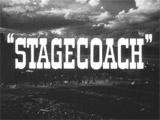

Stagecoach (1939), 96 minutes, D: John Ford
A classic Western from John Ford filmed in the majestic Monument Valley of the Southwest, considered a landmark quintessential film, elevating westerns to a serious genre. Passengers traveling on a stagecoach together to Lordsburg through dangerous and hostile Apache Indian land were each representative character types. They included a saloon dance-hall girl - a shunned prostitute Dallas (Claire Trevor), a drunken Dr. Josiah Boone (Thomas Mitchell), a pregnant woman Lucy Mallory (Louise Platt) on her way to meet her husband, a shady Southern gambler Hatfield (John Carradine), a whiskey salesman Samuel Peacock (Donald Meek), and a banker Henry Gatewood (Berton Churchill) with a mysterious satchel who was accompanied by his wife (Brenda Fowler). Along the way, the driver Buck Rickabaugh (Andy Devine) and his "shotgun" assistant Sheriff Curley Wilcox (George Bancroft) stopped to arrest escaped prisoner outlaw, the Ringo Kid (John Wayne in his first major role, the role that made him commercially famous), who was seeking revenge for the deaths of his brother and father, with three men in Lordsburg. As The Kid was being taken back to jail by the Sheriff, in the face of a savage Indian attack, he defended the passengers' safety with his heroic self-sacrifice and courage.


The Story of the Last Chrysanthemum(s) (1939, Jp.) (aka Zangiku Monogatari), 148 minutes, D: Kenji Mizoguchi
Set in 1888 Tokyo, this was a beautiful, melodramatically-told, moving, sentimental, humanistic film (with lengthy camera takes and long-shots). It told about a tragic, ill-fated romance due to rigid class-based discrimination, social disparities and inequities. Although openly praised, famous Kabuki actor Kikugoro Onoe V's (Gonjurô Kawarazaki) adoptive son Kikunosuke Onoue (Shôtarô Hanayagi), who was less disciplined, talented and skilled (and lives a playboyish life with geishas), suspected that he was being falsely lauded and flattered due to his father's reputation, as others hypocritically talked behind his back. Otoku (Kakuko Mori), the nurse/servant of his adoptive father's newborn infant male child, honestly critiqued and assessed his acting - but was thereafter fired for openly fraternizing with him (and for perceived gossiping). Frustrated and forbidden to see her after her banishment and dismissal by his authoritarian father, he left his comfortable and privileged life and home in Tokyo, located her outside the city in the faraway city of Osaka, and stubbornly married her (against his father's demands). The wayward son was determined and persevering to apply himself to his craft and become a great actor on his own merits. Without the solid legacy of his acting father to fall back upon, a life of poverty, perpetual hardship and misfortune, immense challenges, and obscurity seemed to engulf the young couple. He only found work as an itinerant actor performing for small lower-class audiences. However, after a lucky break, he succeeded in a Kabuki role, and decided to return to Tokyo (but without Otoku since she would be rejected again by his family), to join a Kabuki troupe there. A year later after his family had accepted his marriage and he was a semi-successful actor, Kikunosuke returned to Osaka during a performance tour and found Otoku dying of consumption. Always supportive and believing in him, Otoku remained selfless and encouraging, but soon passed away all alone, while he bowed and accepted accolades from the now-supportive public.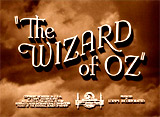




The Wizard of Oz (1939), 103 minutes, D: Victor Fleming
One of the most popular films of all time, and everyone's cherished favorite movie. A colorful (Technicolored) children's fantasy classic, based on Frank Baum's novel, a perennial fantasy musical from MGM during its golden years, and screened perennially for many seasons on television. With many songs from Harold Arlen (music) and Edgar "Yip" Harburg (lyrics), including the well-known theme song "(Somewhere) Over the Rainbow." All of its fanciful images (the Yellow Brick Road, the Kansas twister), characters (e.g., Auntie Em, Toto, Dorothy, the Wicked Witch, Scarecrow, Tin Man, Cowardly Lion, the Wizard), dialogue (e.g., "Lions and tigers and bears, oh my!", "We're not in Kansas anymore," "Follow the Yellow Brick Road," or the film's final line: "There's no place like home"), and music ("Over the Rainbow") have become indelibly remembered. Kansas farm girl Dorothy (Judy Garland in a star-making performance) (Kansas sequences were in sepia-tone) dreamt of a better place, ran away, and was transported with her beloved dog Toto in a twister "beyond the rainbow" to the magical fantasy land of Oz (Oz sequences were in Technicolor). There she met delightfully colorful characters including the Wicked Witch of the West (Margaret Hamilton, also the nasty Miss Gulch in the Kansas scenes), and was dubbed the hero of Munchkin Land for vanquishing her. She was joined by three companions (all Kansas farmhands) - the Scarecrow/Hunk (Ray Bolger), the Tin Man/Hickory (Jack Haley), and the Cowardly Lion/Zeke (Bert Lahr), and watched over by good witch Glinda (Billie Burke). With her companions, she set off on the yellow brick road to seek help from the Wizard (Frank Morgan, also a phony fortune teller in Kansas) in order to get home, and to grant their wishes. The Wizard taught them that all of their desires were already within their grasp, after they subdued the Witch. In the land of Oz after facing many challenges and defeating the Wicked Witch, Dorothy awakened and discovered that things weren't always better somewhere else ("There's no place like home") - she found herself in her bedroom home, back from her fantastical dream/hallucination.


The Women (1939), 132 minutes, D: George Cukor
With an all-woman, all-star cast of more than 125 strong-minded women, based Clare Boothe's (Luce) play. A satirical comedy/drama full of biting and snappy wit, fast dialogue, and superb performances from a great cast. The complex story line about matrimony and the struggles between men and women was full of twists and diversions, almost unimportant. One of the socialite women Mary Haines (Norma Shearer) learned that her husband was having an affair with an amoral perfume sales clerk Chrystal Allen (Joan Crawford). She sought a quickie divorce with a six-week stay in Reno, where she ultimately learned that her husband Stephen wasn't that fond of Chrystal, and so she plotted to get him back. The cast of women engaged in cat-fighting and bitching, vicious gossip and cattiness, husband-stealing, and back-stabbing, while the film provided insight into female bonding and the role of women in society.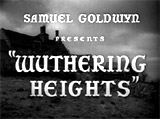




Wuthering Heights (1939), 104 minutes, D: William Wyler
One of the greatest romantic love stories ever filmed (with beautiful Oscar-winning black and white cinematography by Gregg Toland), from Emily Bronte's tragic 1847 Victorian novel, about a pair of eternal lovers. Abandoned orphan Gypsy boy Heathcliff (Rex Downing as child, Laurence Olivier as adult) was taken in by a well-to-do 19th century English family, the Earnshaws (Cecil Kellaway as the father) on the isolated moors. He became their stable boy and fell in love with the family's spoiled young daughter Catherine Earnshaw (Sarita Wooten as child), his childhood friend. The beautiful manor-born Cathy (Merle Oberon as adult) was desperately in love with Heathcliff (they were playmates together, and obviously soul-mates), but because of his low birth, she began seeing a wealthy neighbor's son. Heathcliff left during a jealous misunderstanding and with driving ambition later returned moderately wealthy, discovering that she had married rich Edgar Linton (David Niven), in spite of her passionate love for him. In revenge, he spitefully married Edgar's naive sister Isabella (Geraldine Fitzgerald) and then neglected her. The long-suppressed passionate feelings that Heathcliff and Cathy had for each other continued to torment them and embitter them as haunted, star-crossed lovers. They pledged to be together for eternity as Cathy died on her death-bed, and he continued to mourn her passing.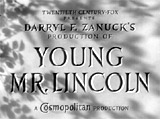

Young Mr. Lincoln (1939), 100 minutes, D: John Ford
A remarkably realistic period piece and historical drama, from Lamar Trotti's original story. It was a recreation and character study of the early years of Abraham Lincoln (Henry Fonda), the 16th President of the US, beginning around the time of the Whig convention of 1832. A rough-hewn, shy, Kentucky log cabin-born young Abe experienced the loss of his first love Ann Rutledge (Pauline Moore), and then struggled to make it as a country backwoods lawyer. The new state capital of Springfield, Illinois was also the location of the new law office of the prominent young lawyer, who was also recently elected to the state's legislature. His folktale attributes were emphasized at Independence Day celebrations: with log-splitting, and pie-eating judging, etc. During the tug-of-war contest, Scrub White (Fred Kohler, Jr.) and John Palmer Cass (Ward Bond) pestered young Sarah Clay (Arleen Whelan) - her husband Matt Clay (Richard Cromwell) and her brother-in-law Adam Clay (Eddie Quillan) intervened and they soon stopped. But later that night, drunken bully White confronted the two brothers Matt and Adam. During their brawl, White drew his gun and it fired. Cass appeared from the darkness, and claimed White was dead on the ground - not from a single gunshot, but from a knife that Cass had pulled from his heart. Cass claimed that he saw the killing in the "moon-bright" light. Lincoln became involved in the defense of the two farmers accused of murder. Mrs. Abigail Clay (Alice Brady) saw the struggle, but wouldn't talk about it, even when her two boys were arrested for manslaughter. Both were determined to take the blame, trying to spare each other from hanging. Lincoln was able to convince an angry lynch mob to disperse from the jail. He argued that he needed this first case as an up-and-coming lawyer. During the trial, the case was prosecuted by John Felder (Donald Meek). Lincoln argued that the defendants acted in self-defense when they saw White with a gun. Cass ultimately testified that he saw Matt kill White - at nighttime in the moonlight when he was about 100 yards away. As Cass was leaving the witness stand area, Lincoln asked Cass what he had against Scrub White. Lincoln produced a Farmer's Almanac, proving on page 12 that Cass' story was a lie. The almanac stated that the moon had set 40 minutes before White was killed, making it pitch-black at the time of the murder. Lincoln coerced a confession from Cass that he had lied - Cass admitted that he had killed White with Matt's dropped knife (when he came upon the scene and saw that White was unhurt): "I didn't mean to kill him!" Cass was trying to frame one of the Clays. Matt and Adam were released from jail.